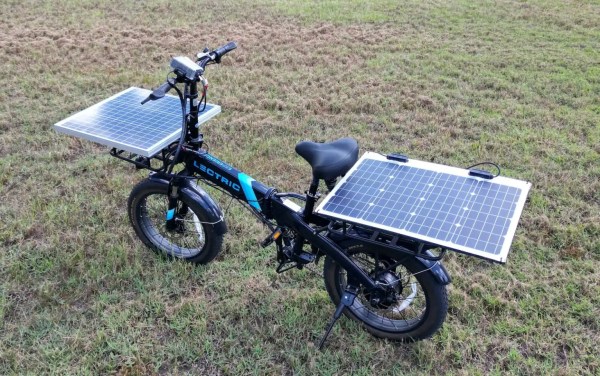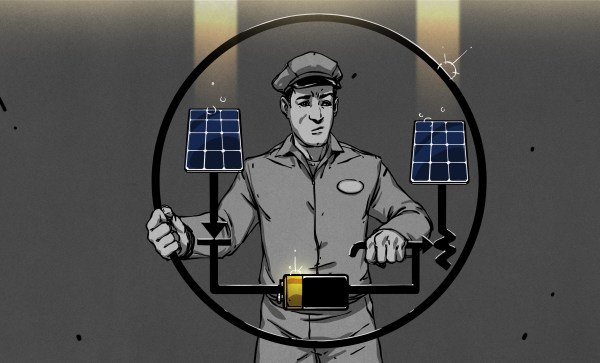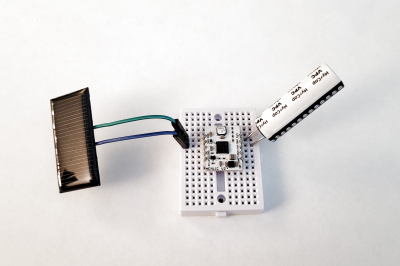A regular comment we see on electric aircraft is to “just add solar panels to the wings.” [James] from Project Air has been working on just such a solar plane, and as he shows in the video after the break, it is not a trivial challenge.
A solar RC plane has several difficult engineering challenges masquerading as one. First, you need a solid, efficient airframe with enough surface area for solar panels. Then, you need a reliable, lightweight, and efficient solar charging system and, finally, a well-tuned autopilot to compensate for a human pilot’s limited endurance and attention span.
In part one of this project, a fault in the electrical system caused a catastrophe so James started by benching all the electricals. He discovered the MPPT controller had a battery cutoff feature that he was unaware of, which likely caused the crash. His solution was to connect the solar panels to the input of a 16.7 V voltage regulator—just under the fully charged voltage of a 4S LiPo battery— and wire the ESC, control electronics, and battery in parallel to the output. This should keep the battery charged as long as the motor doesn’t consume too much power.
After rebuilding the airframe and flight testing without the solar system, [James] found the foam wing spars were not up to the task, so he added aluminum L-sections for stiffness. The solar panels and charging system were next, followed by more bench tests. On the test flight, it turned out the aircraft was now underpowered and struggled to gain altitude thanks to the added weight of the solar system. With sluggish control responses,[James] eventually lost sight of it behind some trees, which led to a flat spin and unplanned landing.
Fortunately, the aircraft didn’t sustain any damage, but [James] plans to redesign it anyway to reduce the weight and make it work with the existing power system.
We’ve seen several solar planes from [rctestflight] and meticulously engineered versions from [Bearospace Industrues]. If long flight times is primarily what you are after, you can always ditch the panels and use a big battery for 10+ hour flights.








![5315181650477410414_thumbnail [Nick Poole]'s thermionic converter array](https://i0.wp.com/hackaday.com/wp-content/uploads/2022/04/5315181650477410414_thumbnail.png?w=396&h=396&crop=1&ssl=1)
![5079001583214379162_thumbnail [Anuradha Gunawardhana]'s 18650 Pack](https://i0.wp.com/hackaday.com/wp-content/uploads/2022/04/5079001583214379162_thumbnail.png?w=396&h=396&crop=1&ssl=1)












